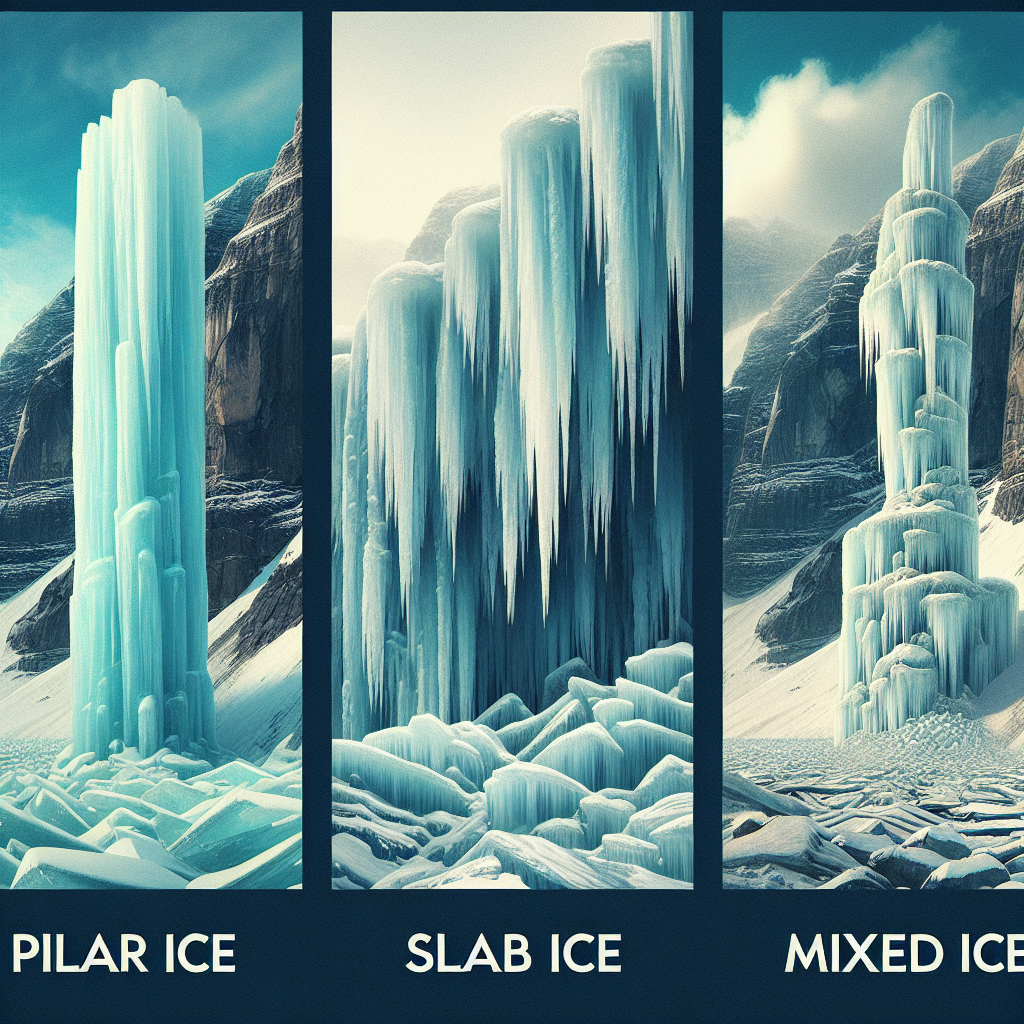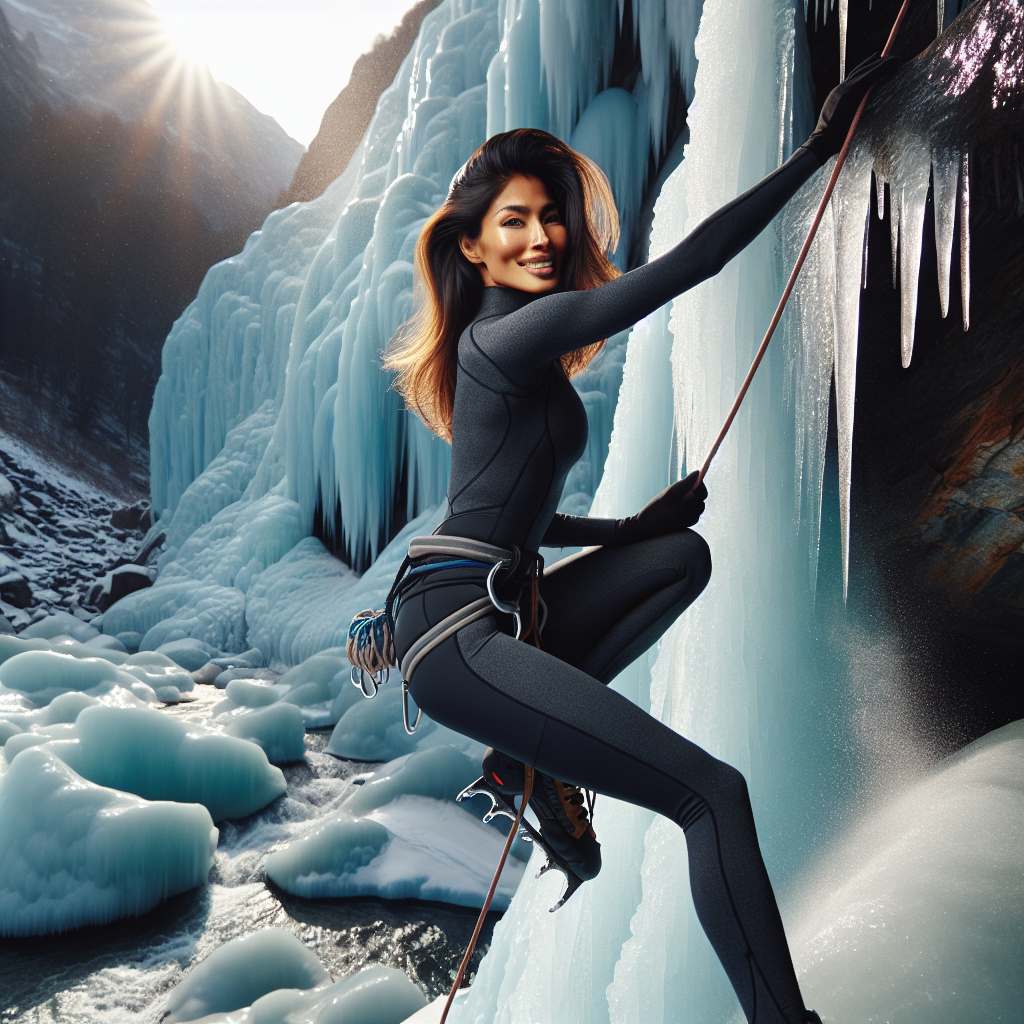Ice climbing in New Hampshire offers an exhilarating experience against the backdrop of stunning winter landscapes. With its diverse ice formations and scenic views, New Hampshire is a prime destination for ice climbers. However, the allure of this sport comes with its set of challenges, including rapidly changing weather conditions and varying degrees of climbing difficulty. Whether you’re a seasoned climber or a beginner, understanding how to stay safe is crucial to enjoying this thrilling pursuit. Here’s a comprehensive guide to ensure your safety while ice climbing in New Hampshire.
Table of Contents
Understanding the Terrain
New Hampshire’s ice climbing terrain varies widely, predominantly characterized by pillar, slab, and mixed ice formations. Each type presents unique challenges:
- Pillar Ice forms vertical columns that require technical climbing skills. Stability is key, as these structures can be fragile.
- Slab Ice offers more surface area but requires careful movement to maintain grip and balance.
- Mixed Ice combines rock and ice elements, requiring versatility and adaptability in climbing techniques.
To mitigate risks, it’s essential to assess the stability of ice formations and be prepared for sudden changes in the terrain.

Essential Gear
Equipping yourself with the right gear is fundamental to ice climbing safety and success. Here’s a comprehensive checklist:
- Clothing: Dress in moisture-wicking layers to regulate body temperature and stay dry.
- Harness and Helmet: Essential for protection and safety during climbs.
- Ice Tools and Crampons: Ensure they are sharp and well-maintained for effective use.
- Ropes and Ice Screws: Vital for anchoring and securing yourself during climbs.
Each piece of gear plays a critical role; always inspect your equipment before setting out.

Safety Precautions
Prioritizing safety begins with proper preparation:
- Weather Monitoring: Regularly check forecasts and understand how weather conditions impact ice stability.
- Avalanche Awareness: Familiarize yourself with avalanche risk areas and learn to interpret warning signs.
- Ice Condition Assessment: Evaluate ice thickness and structure before climbing to ensure safety.
By taking these precautions, you can significantly reduce potential hazards.
Training and Preparations
Physical and mental preparation are keys to ensuring a successful climb:
- Physical Conditioning: Engage in exercises that build strength, endurance, and flexibility specific to ice climbing.
- Mental Preparation: Overcome fear and build confidence through visualization and practice.
- Technique Practice: Utilize indoor ice walls or dry-tooling areas to hone your skills.
These preparations will enhance your climbing proficiency and safety.

Planning Your Climb
Careful planning is essential for a successful outing:
- Route Selection: Choose routes that align with your skill level and objectives.
- Communication: Inform a trusted person about your plans and itinerary. This ensures someone knows your whereabouts in case of emergency.
Effective planning minimizes risks and enhances the climbing experience.
On the Climb
Execution during the climb requires precision and adherence to best practices:
- Ascending Techniques: Use ice tools and crampons efficiently to conserve energy.
- Anchor Building: Place ice screws securely and construct reliable anchors for safety.
- Belaying: Communicate clearly with your belayer to maintain coordination and safety.
These practices ensure a smooth and secure climb.

Emergency Procedures
Preparedness for emergencies can make a significant difference:
- Fall Response: Learn self-arrest techniques and rely on your belayer for safe catching.
- First Aid: Familiarize yourself with basic treatments for cuts, bruises, and hypothermia.
- Self-Rescue: Master techniques for getting out of a crevasse or descending safely if necessary.
Having a plan in place enhances overall safety.
Post-Climb Checklist
Reflecting and maintaining gear post-climb contributes to future success:
- Debriefing: Discuss the climb to identify successes and areas for improvement.
- Gear Maintenance: Inspect and care for equipment to ensure longevity and reliability.
- Personal Reflection: Use each climb as an opportunity for growth and skill enhancement.
Prime Locations for Ice Climbing in New Hampshire
New Hampshire offers an array of exceptional ice climbing spots known for their beauty and challenge:
- Mount Washington: Known for its majestic landscapes and challenging routes, Mount Washington is a must-visit locale for experienced climbers.
- Frankenstein Cliff: This area provides a variety of routes suitable for different skill levels, ensuring climbers have plenty of options to explore.
- Cannon Cliff: Famous for its mixed climbing opportunities, Cannon Cliff attracts climbers looking for a combination of rock and ice climbing.
Skill-Building for Ice Climbing
Improving your ice climbing skills requires a commitment to consistent training and a focus on various key aspects:
- Strength Training: Engage in exercises such as pull-ups, core workouts, and leg presses to build the physical strength necessary for ice climbing.
- Technical Skills: Attend workshops or courses that cover essential techniques like proper use of ice axes, crampon placement, and efficient climbing movements.
- Balance and Coordination: Practice activities that enhance balance, such as yoga or balance boards, to improve your stability on the ice.
Conclusion
Ice climbing in New Hampshire offers unparalleled excitement and opportunity for adventure. By prioritizing safety through preparation, proper equipment, and informed decision-making, you can enjoy this thrilling sport responsibly. Keep learning, stay vigilant, and always respect the environment. Ready to take your ice climbing skills to the next level? Share your experiences and connect with the community to grow together. Happy climbing!!
Frequently Asked Questions (FAQs)
What is the best time of year for ice climbing in New Hampshire?
The prime season for ice climbing in New Hampshire typically spans from December through March. During these months, the cold temperatures create ideal conditions for stable ice formations. However, it’s crucial to monitor weather changes as warming trends can destabilize ice.
What are some popular ice climbing locations in New Hampshire?
New Hampshire is home to several renowned ice climbing destinations, including Mount Washington, Frankenstein Cliff, and Cannon Cliff. Each location offers unique challenges and stunning landscapes, catering to climbers of varying skill levels.
Do I need a guide if I’m new to ice climbing?
If you’re new to ice climbing, hiring a professional guide is highly recommended. A guide can provide essential expertise, safety instructions, and knowledge of the terrain, ensuring a safe and enjoyable experience.
What should I do if I encounter an unexpected weather change during a climb?
If you encounter sudden weather changes, prioritize safety and descend carefully if conditions become unfavorable. Always have a backup plan, such as a pre-determined safe route or an emergency shelter location.
Are there any regulations or permits required for ice climbing in New Hampshire?
Generally, no specific permits are needed for ice climbing in New Hampshire. However, some areas, especially within state parks or private lands, may have specific regulations or access fees. Always check local guidelines before your climb.
How can I practice ice climbing techniques off the mountain?
Off-mountain practice can be done at indoor climbing gyms with ice walls or through dry-tooling areas designed for skill development. These facilities allow climbers to refine techniques and build confidence in a controlled environment.
By addressing these common inquiries, ice climbers can better prepare, plan, and enjoy their adventures safely in New Hampshire.
